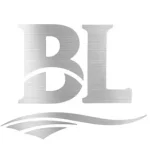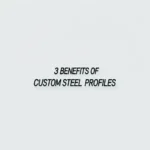The global shipping industry relies heavily on the durability, strength, and cost-effectiveness of carbon steel for container fabrication. As the backbone of international trade, shipping containers must withstand extreme environmental conditions, mechanical stresses, and long-term wear. This article explores the standards, material properties, fabrication techniques, and customization options for carbon steel in shipping containers, ensuring compliance with international regulations while optimizing performance.


1. Why Carbon Steel? Key Material Properties
Carbon steel is the preferred material for shipping containers due to its high strength-to-weight ratio, corrosion resistance (with coatings), and economic viability. The following properties are critical:
– Tensile Strength: Typically ranges from 400 to 550 MPa, ensuring structural integrity under heavy loads.
– Yield Strength: Around 235 to 355 MPa, critical for withstanding stacking forces.
– Hardness: 120-180 HB (Brinell hardness), balancing wear resistance and weldability.
– Corrosion Resistance: Enhanced via hot-dip galvanization or epoxy coatings, extending lifespan in harsh marine environments.
Advantages Over Alternatives:
– Cost Efficiency: 30-40% cheaper than stainless steel or aluminum.
– Recyclability: 100% recyclable, aligning with sustainability goals.
– Repairability: Easier to weld and modify than composite materials.
2. International Standards for Carbon Steel Containers
Shipping containers must adhere to ISO standards to ensure global interoperability:
– ISO 1496-1: Defines dimensional tolerances, strength requirements, and testing methods.
– ISO 1161: Specifies corner fittings and load-bearing capacities.
– ASTM A36/A1011: Common steel grades used for container frames and panels.
– CSC (Container Safety Convention): Mandates regular inspections and certifications.
Key Compliance Factors:
– Stacking Load: Must support 6-8 containers high (up to 200 tons).
– Roof Strength: Must bear 300 kg/m² for manual access.
– Floor Load: Typically 1,500 kg/m² for heavy cargo.
3. Custom Fabrication Techniques
While standard containers follow strict guidelines, custom fabrication addresses unique logistical needs:
– Modified Dimensions: Non-standard sizes for oversized cargo (e.g., 45ft, 53ft containers).
– Reinforced Structures: Extra steel beams for high-cube containers or open-top designs.
– Specialized Coatings: Zinc-rich primers or marine-grade paints for saltwater exposure.
– Hybrid Materials: Combining carbon steel with aluminum cladding to reduce weight.
Fabrication Processes:
1. Laser Cutting: Precision shaping of steel plates (tolerances ±0.5mm).
2. Robotic Welding: Ensures consistency in seam strength (tested per AWS D1.1).
3. Surface Treatment: Shot blasting to Sa2.5 standard before coating.
4. Quality Control: Non-destructive testing (NDT) for weld integrity.
4. Applications Beyond Standard Containers
Carbon steel’s versatility extends to niche uses:
– Reefer Containers: Insulated panels with steel frames for perishable goods.
– Offshore Containers: Extra corrosion protection for oil/gas platforms.
– Military/Disaster Relief: Blast-resistant or modular designs.
5. Sustainability and Future Trends
- Recycled Steel: Up to 90% recycled content in modern containers.
- Lightweighting: Advanced high-strength steel (AHSS) to reduce fuel consumption.
- Smart Containers: Embedded sensors for real-time monitoring, requiring steel-compatible IoT integration.
Partner with Baoli: Your Custom Steel Solution
As a leading Chinese steel manufacturer, Baoli specializes in custom carbon steel fabrication for shipping containers. Our capabilities include:
– Tailored Designs: From standard ISO to bespoke configurations.
– Certified Quality: Full compliance with ISO, CSC, and ASTM standards.
– Global Logistics: Efficient supply chain management for bulk orders.
Whether you need high-strength frames, corrosion-resistant coatings, or modular modifications, Baoli delivers precision-engineered solutions for your maritime logistics challenges. Contact us to discuss your project requirements and leverage our expertise in carbon steel innovation.
Carbon Steel for Shipping Containers: Standards and Custom Fabrication — This article provides a practical buyer‑focused overview with specifications, selection tips, and on‑site considerations. Explore related topics: blog.
Key Specifications and Standards
- Standards: ASTM / EN / JIS (e.g., ASTM A240/A36, EN 10088/10025, JIS G4304/G3131).
- Surface options: 2B, BA, No.4, HL, mirror; galvanized (electro / hot‑dip).
- Processing: hot‑rolled, cold‑rolled, annealed & pickled, welded or seamless.
- Typical services: slitting, shearing, cut‑to‑length, drilling, beveling, deburring.
- Documentation: MTC, CO, packing list with net/gross weight and heat numbers.
Typical Applications
Construction, machinery, automotive, energy, enclosures and fencing, food equipment (for stainless), and general fabrication. Match grade and finish to corrosion, strength, and appearance requirements.
Selection Guide
- Use certified material with Mill Test Certificate (MTC).
- Confirm standards (ASTM/EN/JIS) and tolerances per drawing.
- Match surface finish to application (2B/BA/No.4/galvanized).
- Specify dimensions and acceptable deviation upfront.
- Plan packaging and corrosion protection for transit.
Processing, Packaging and Logistics
We adopt edge protection, waterproof wrapping, rust‑inhibiting paper, fumigated pallets, and strapping suitable for sea freight. Loading photos and weight lists are provided for each shipment.
FAQs
Q: What lead time can I expect?
A: Typically 7–15 days ex‑works for standard sizes; custom processing may extend the schedule.
Q: Can you provide cut‑to‑size service?
A: Yes. We slit, shear, cut, drill, bevel and deburr to drawing to reduce waste and speed installation.
Q: How do you ensure quality?
A: Incoming inspection, process control, and final inspection with traceable heat numbers; third‑party inspection is available.
Q: Do you support small trial orders?
A: We support pilot quantities with consolidated shipping to control cost.
All values are typical and for guidance only; confirm with the datasheet and purchase order before production.
Related products: view details.
Related products: view details.





